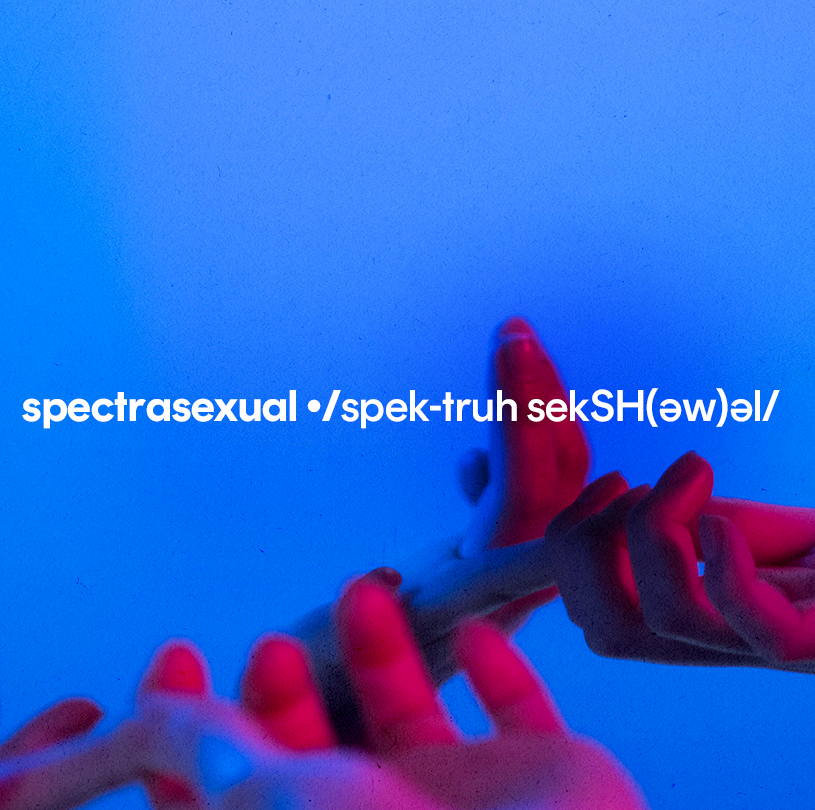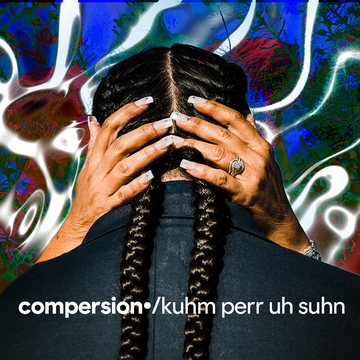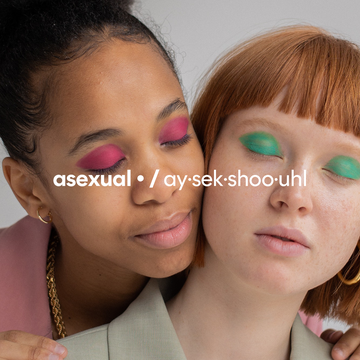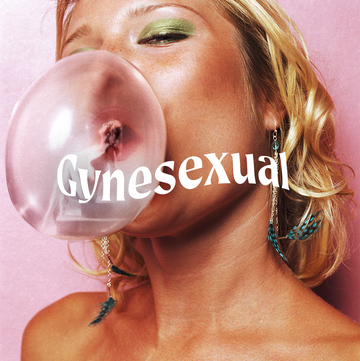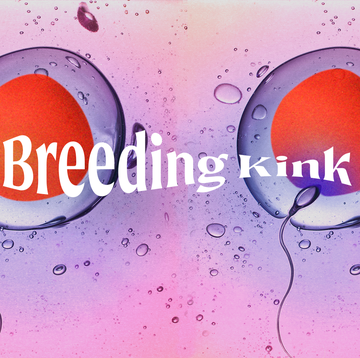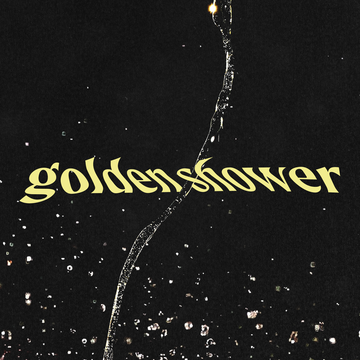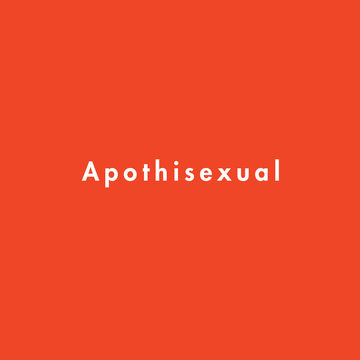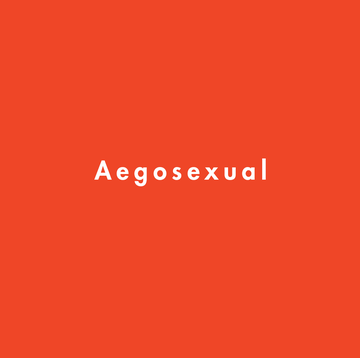Do you get turned on by people of multiple genders or sexual identities? Maybe you flirt with your cute barista every morning or fantasize about your hot neighbor—yet they both have completely different gender identities, and you’re left wondering where that leaves you on the sexuality spectrum. If this sounds familiar, there’s a chance you may be spectrasexual—aka attracted to various genders, but not all. Spectrasexual is one of the many romantic and sexuality identity terms that have emerged in recent years, so if you’ve never heard it before, you’re not alone. Fortunately, we tapped a few experts to unpack what it means.
“Within the LGBTQ+ community, language has been constantly evolving for decades,” says Luke Allen, PhD, a licensed psychologist who primarily works with transgender and non-binary youth and their families. “People are creating or discovering new terms that better describe their attractions and experiences.” One of these newer terms, spectrasexuality, refers to people who have romantic, sexual, and/or emotional connections to many different sexual orientations, Allen says. Spectrasexual differs slightly from terms like pansexual and omnisexual, which also describe folks who can be attracted to various genders (more on that soon).
Finding a label that fits your unique identity is a personal process and it’s important to use language that resonates with you. If you’re curious about whether or not you’re spectrasexual, here’s what the word means, how it differs from other sexuality labels, and why the term might be slightly controversial, according to experts.
Related terms:
What Is Spectrasexuality?
Spectrasexuality is a newer label, but it’s unclear where and how it first originated. One sexuality Wiki page suggests the term was first used online in 2006. In 2015, it was briefly listed in the Psychology of Sexual Orientation and Gender Diversity journal as a secondary form of sexual identity. Although the term is pretty new, many people are starting to explore the lesser-known type of sexuality (the hashtag #spectrasexual currently has over 120 million views on TikTok).
“Spectrasexuality indicates being attracted (physically and/or romantically) to a range of sexes, genders, and gender identities,” explains Rachel Zar, LMFT, a licensed marriage and family therapist and certified sex therapist. But a defining trait of spectrasexual folks is that they aren’t necessarily attracted to all identities, and they likely still have gender and sexuality preferences for who they are attracted to.
“Spectrasexual individuals are attracted to multiple sexes and genders, but not necessarily all or any,” says Jack Bartel, PsyD, a licensed clinical psychologist who specializes in LGBTQ+ communities, gender exploration, and sexuality counseling.
“When we look at spectrasexuality, we see the word ‘spectrum,’” adds Lee Phillips, EdD, a certified sex and couples therapist, psychotherapist, and host of the Sex and Chronic Illness podcast. Terms like spectrasexuality remind us that sexual fluidity exists, and that the culture around sexuality terms is continuing to shift beyond the binary, Phillips says.
What’s the Difference Between Spectrasexual, Pansexual, and Omnisexual?
Because spectrasexuality emphasizes being attracted to multiple genders, it is often confused with terms like pansexual and omnisexual. While experts agree that there is quite a bit of overlap for each definition, there are a few distinctions to be aware of.
“The main difference between spectrasexual and pansexual is that people who identify as spectrasexual are sexually attracted to multiple genders, but not all genders,” Phillips explains. “People who identify as pansexual are attracted to all genders regardless of their gender.” When it comes to sexual attraction, Allen says that pan folks typically don’t limit their relationships based on sex, gender, or gender identity, whereas a spectrasexual person might. So, both spectra and pan folks can be attracted to a variety of identities, but spectra individuals may not necessarily be attracted to each and every one.
People who identify as omnisexual, on the other hand, can experience attraction to everyone (the root “omni” means “each and every one”). Courtney D’Allaird, founding coordinator of the Gender and Sexuality Resource Center at the University of Albany, previously told Cosmopolitan that while omnisexual folks can find themselves attracted to “each and every” person, they still see and acknowledge gender in the context of attraction—whereas pan folks are often seen as being “gender blind.”
The bottom line: Spectra folks may not be attracted to all sexes, genders, or gender expressions. But it’s common for folks to use pansexual, omnisexual, and spectrasexual interchangeably given the overlap between terms.
How Do You Know If You’re Spectrasexual?
There is no strict set of guidelines determining whether a person is spectrasexual or not. “Exploring gender identity and sexuality is an incredibly personal process,” says Stella Harris, a certified intimacy educator, professional coach, and author of multiple books on sex education. “Some people might see something in a book, movie, magazine, or online that makes something ‘click.’ For others, it can be a years-long journey without ever finding language or labels that feel like home.”
If you’re spectrasexual, Harris says the first sign may simply be that the term speaks to you. “You light up when you hear it in a way that hasn’t happened when you’ve read about other sexuality labels,” she says. “Or maybe it’s when you watch a favorite movie or TV show and think, Yes, all of them, please! when considering which character you’re most attracted to.”
Many folks are drawn to spectrasexual when other labels don’t quite capture their experience. "Spectrasexual’ may feel good to you if the terms ‘straight’ or ‘bisexual’ feel limiting,” Zar explains. If you often find yourself specifying or explaining (i.e., "I'm bisexual-—I'm attracted to cismen and ciswomen, but I'm also attracted to transwomen"), you may find that spectrasexuality is a more accurate term to capture your experience, Zar adds. “[Spectrasexual] may also work for you if you don’t feel that the terms ‘omnisexual’ or ‘pansexual’ acknowledge that your pull toward certain sexes or genders is stronger than to others.”
If you’re still unsure, Bartel recommends learning about other sexual orientations and their definitions. “This will help you better understand if [spectrasexual] fits your thoughts and emotions best,” he says. “It can also be really helpful to talk to other folx in your life who are part of the LGBTQ+ community or others who are spectrasexual.”
Why Is The Term Controversial?
Labels can be empowering, but sometimes, they can be limiting. “There is some debate about the term [spectrasexual],” Bartel says. “Some find it provides an avenue for folx to be discriminated against. For example, someone will say they are spectrasexual and are attracted to all men, except trans men. Or they will say they are attracted to all females, except trans women. This is both harmful and dangerous for transgender folx since transwomen are women and transmen are men.”
Harris, who identifies as bisexual, worries that terms like spectrasexuality contribute to confusion about other similar labels. “I’m in favor of any language or tools that help people discover or explore their identities,” she says. “But I have the same concern about spectrasexuality as I do about [terms like] pansexuality—that it may contribute to biphobia and bi-erasure.” Since labels like spectrasexual and pansexual tend to fall under the bisexual umbrella, it’s easy to see the gray area.
That said, one word seldom captures who you are and who you’re attracted to. And language is constantly evolving—just like you are.
“Only you get to assign yourself a label, and since sexual orientation can be fluid—meaning that it can change throughout your lifetime—you also get to change that label as it feels good to you,” Zar says. So if spectrasexual feels good for you right now, great! Maybe pansexual aligns better, or you use the terms interchangeably. At the end of the day, you should feel empowered to use terms that feel good for you, no matter how you identify.
Tianna Soto is a writer, editor, and professional wellness speaker based in New York City. Previously, she was a contributing editor on the dating team at Elite Daily and an associate editor at Her Campus Media. When she’s not writing, you can find her traveling, singing, and speaking with college audiences about mental health. You can connect with her on Instagram and Twitter.
